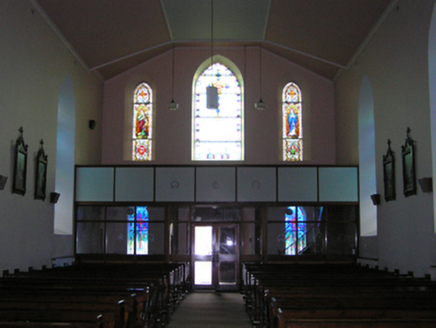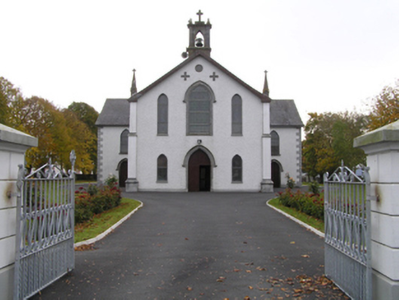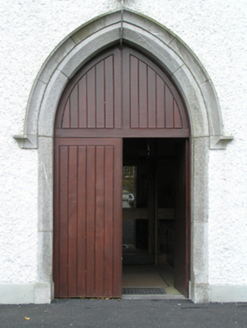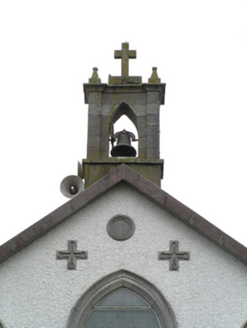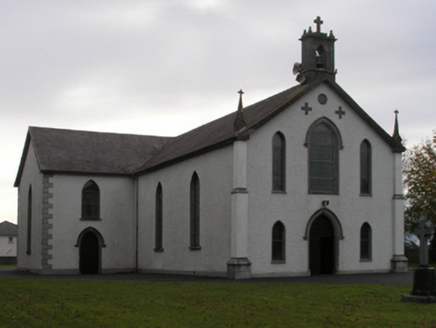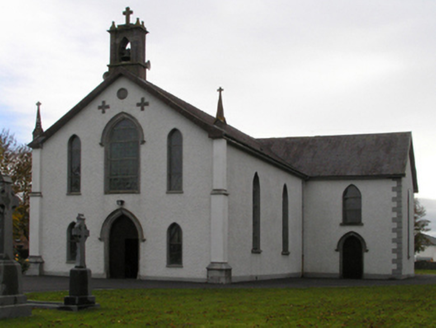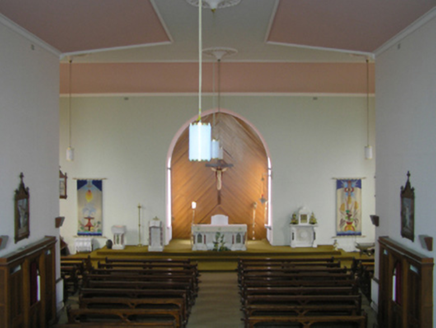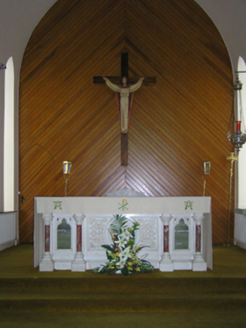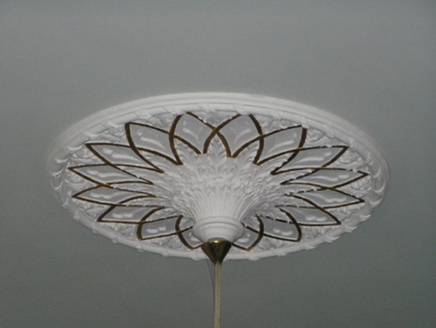Survey Data
Reg No
12304011
Rating
Regional
Categories of Special Interest
Architectural, Artistic, Historical, Social
Previous Name
Saint Mary's Catholic Church
Original Use
Church/chapel
In Use As
Church/chapel
Date
1830 - 1835
Coordinates
228510, 163422
Date Recorded
19/05/2004
Date Updated
--/--/--
Description
Detached four-bay double-height Catholic church, built 1832, on a cruciform plan comprising two-bay double-height nave opening into single-bay (single-bay deep) double-height transepts centred on single-bay double-height chancel to crossing (south). Renovated, 1963, with sanctuary reordered. Pitched slate roof on a cruciform plan with ridge tiles, copper-covered coping to gable to entrance (north) front with Cross finial-topped bellcote to apex framing cast-bronze bell, and cast-iron rainwater goods on box eaves retaining cast-iron downpipes. Roughcast walls on rendered plinth with rendered quoins to corners; roughcast wall to entrance (north) front with diagonal obelisk pinnacle-topped rendered buttressed piers to corners on drag edged tooled cut-limestone chamfered cushion courses on repointed drag edged tooled limestone ashlar bases. Lancet window openings with cut-limestone sills, and concealed dressings framing storm glazing over fixed-pane fittings having leaded stained glass panels. Lancet window openings to entrance (north) front centred on pointed-arch door opening with threshold, and drag edged tooled cut-limestone surround having chamfered reveals with hood moulding framing timber boarded double doors having overpanel. Lancet window openings centred on pointed-arch window opening (gable), drag edged tooled cut-limestone surround having chamfered reveals with hood moulding framing storm glazing over fixed-pane fitting having leaded stained glass panel. Pointed-arch door openings (transepts) with thresholds, and drag edged tooled cut-limestone surround having chamfered reveals with hood moulding framing timber boarded double doors having overpanels. Pointed-arch window openings with cut-limestone sills, and concealed dressings framing storm glazing over fixed-pane fittings having leaded stained glass panels. Full-height interior with stained glass windows (----), central aisle between timber pews, paired timber stations between stained glass windows (----), carpeted stepped dais to sanctuary to crossing (south) reordered, 1963, with quatrefoil-detailed cut-veined white marble panelled altar, and moulded plasterwork cornice to ceiling centred on "Acanthus"-detailed ceiling roses. Set in landscaped grounds with rendered channelled piers to perimeter having "Cavetto"-detailed shallow pyramidal capping supporting wrought iron double gates.
Appraisal
A church representing an important component of the ecclesiastical heritage of County Kilkenny with the architectural value of the composition, one recalling the contemporary Catholic Church of Saint Kieran and Saint Michael (1831) in Johnstown (see 12302002) and Catholic Church of the Immaculate Conception (1845) in Galmoy (see 12400301), confirmed by such attributes as the cruciform plan form, aligned along a liturgically-incorrect axis; the "pointed" profile of the openings underpinning a contemporary Georgian Gothic theme with those openings showing silver-grey limestone dressings demonstrating good quality workmanship; and the pinnacled bellcote embellishing the roofline as a picturesque eye-catcher in the landscape: meanwhile, aspects of the composition illustrate the partial reconstruction of the church to designs signed by Simon Aloysius Leonard (1903-76) of William Henry Byrne and Son (formed 1902) of Suffolk Street, Dublin. Having been well maintained, the elementary form and massing survive intact together with quantities of the original fabric, both to the exterior and to the interior reordered (1963) in accordance with the liturgical reforms sanctioned by the Second Ecumenical Council of the Vatican (1962-5) where contemporary joinery; stained glass; a much modified altar; and decorative plasterwork enrichments all highlight the artistic potential of a church making a pleasing visual statement in a rural village street scene.
